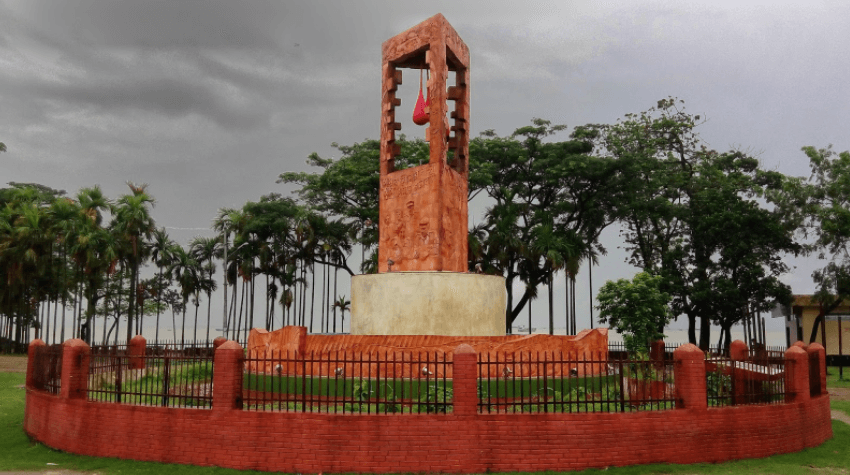
Chandpur, the city of Hilsa, is a favorite travel destination for travel lovers and food lovers alike. The immense beauty of the Meghna River and the estuary of the three rivers have made Chandpur unique. Not only the beauty of the river but also the historical installations and archeological monuments are not less in Chandpur. There are various places of interest spread all over Chandpur.
If you are thinking of visiting Ruposhi Chandpur, the land of Hilsa, don’t forget to include Raktadhara Memorial in your Chandpur travel list. This monument, which is intertwined with the memory of the liberation war, still holds the horrible memory of 1971.
The monument of the liberation war is the bloodstream
Raktadhara, a monument of the liberation war, is located at the massacre ground at Molhead of Chandpur Bara station, the meeting place of Padma, Meghna, and Dakatiya. Forty years after independence, ‘Raktadhara’ was created in 2011 at the initiative of the administration at the request of local heroic freedom fighters and the younger generation.
In 1971, freedom-loving Bengalis were brought here and tortured to death. That is why a pillar was built in this slaughterhouse, which is named Raktadhara. During the Great War of Liberation in 1971, the Pakistani aggressors set up several torture centers at Puran Bazar and Bara station at the mouth of the Meghna-Dakatiya river at the western end of Chandpur town. Which Pakistanis called ‘torture cell’.
Those who reached Chandpur in various vehicles including boats, launches, steamers, and trains were detained and tortured on suspicion. Besides, freedom-loving men and women from different parts of the district were brought to the torture cell and tortured inhumanely. In the end, he would tie his hands and feet and throw them alive, half-dead, or killed in the fast-flowing rivers of Meghna and Dakatiya.
It is estimated that about 50,000 people captured from different parts of the country were killed and dumped in the Meghna estuary. At the confluence of the Dakatiya and Meghna rivers in Chandpur, the depth of the cyclone is about nine hundred feet. When the dead bodies are tied with stones and thrown away, they go 20-25 miles away in an instant.
The Meghna-Dakatiya stream would flow here in the bloodstream of the people. At that time, Razakar, Al Badr, and Al-Shams, the accomplices of the invading forces, were cooperating in the massacre. This memorial bears the painful memory of that brutal massacre of 1971. It is a beacon for the present generation. This monument has been built to keep their sacrifice immortal.
Raktadhara’s architect is Chanchal Karmakar. The blood flow is indicated by the portrait of three drops of blood on a column. The terracotta murya le has been painted with the speech of Bangabandhu Sheikh Mujibur Rahman, depicting the events of the Liberation War. Many tourists from all over the country flock to see this remarkable sculpture.
How to get there:
You can go to Chandpur by launch or bus from Dhaka. The distance from the launch ghat to this monument is only 850 meters. If you want you can walk to the road. You can also go by rickshaw or autorickshaw. The rent from the ghat will be 10 Tks per person. Apart from this, rickshaws and autorickshaws can also be taken from Shapath Chattar, the heart of Chandpur district. And its distance from the bus stand is about 2 km.
Read More: Shahrasti Srin
